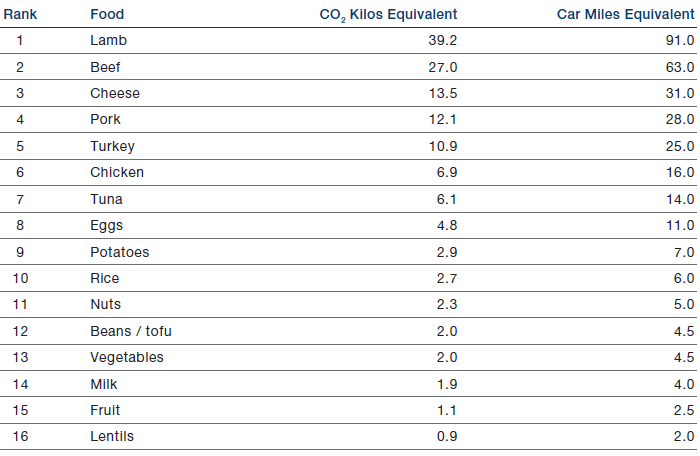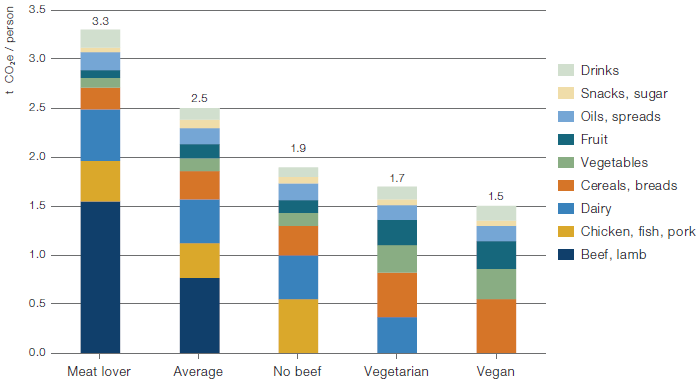Jason Mitchell discusses the circular economy and going carbon negative with Pia Heidenmark Cook, Chief Sustainability Officer of IKEA Group.
Jason Mitchell discusses the circular economy and going carbon negative with Pia Heidenmark Cook, Chief Sustainability Officer of IKEA Group.
March 2020
Did you know that you would need to drive 63 miles to produce the same emissions as eating one kilogram of beef (Figure 1)?
Changing the foods we eat can have a massive impact on our carbon footprint. This is the main reason furniture retailer Ikea – ironically famous for its meatballs – has started selling plant-based foods along with its meaty versions as it seeks to slash its emissions, according to the company’s Chief Sustainability Officer Pia Heidenmark Cook.
“A plant-based hot dog has seven times less footprint than a meat one,” Heidenmark Cook said in a podcast hosted by Jason Mitchell, Co-Head of Responsible Investment at Man Group. “The future is plant-based protein with potentially meat as a treat.”
Food is just one way in which the retailer is trying to “meet the needs of people in life in new ways going forward”, according to Heidenmark Cook. It is also focusing on home energy (via home solar and heat pumps), how we consumer as a family (via the circular model) and transport (via electric vehicles and alternative fuels).
It’s fundamental that a company exists to serve people, to be relevant and to provide what people need, but “not at any cost,” she said in the podcast. “We also need to reflect on questions like: is it realistic that everything should be delivered in two hours just because it is convenient? If the footprint is 10 times higher, then can we inform people that there are alternatives? We need companies to step out and inform customers that they have a choice. It’s not about eating a plant-based hot dog once. It takes 10,000 hours to create a habit – how do we make it stick?”
Figure 1. Greenhouse Gas Emissions Produced by One Kilo of Each Food

Source: GreenEatz, Environmental Working Group’s Meat Eater’s Guide, EPA’s Guide to Passenger Vehicle Emissions; as of 4 March 2020.
Figure 2. Foodprints by Diet Type

Note: All estimates based on average food production emissions for the US. Footprints include emissions from supply chain losses, consumer waste and consumption. Each of the four example diets is based on 2,600 kcal of food consumed per day, which in the US equates to around 3,900 kcal of supplied food. Source: GreenEatz, Shrink That Foodprint, ERS, USDA, various LCA and EIO-LCA data; as of 4 March 2020.
Comments may have been edited and condensed for editorial purposes.
You are now exiting our website
Please be aware that you are now exiting the Man Institute | Man Group website. Links to our social media pages are provided only as a reference and courtesy to our users. Man Institute | Man Group has no control over such pages, does not recommend or endorse any opinions or non-Man Institute | Man Group related information or content of such sites and makes no warranties as to their content. Man Institute | Man Group assumes no liability for non Man Institute | Man Group related information contained in social media pages. Please note that the social media sites may have different terms of use, privacy and/or security policy from Man Institute | Man Group.